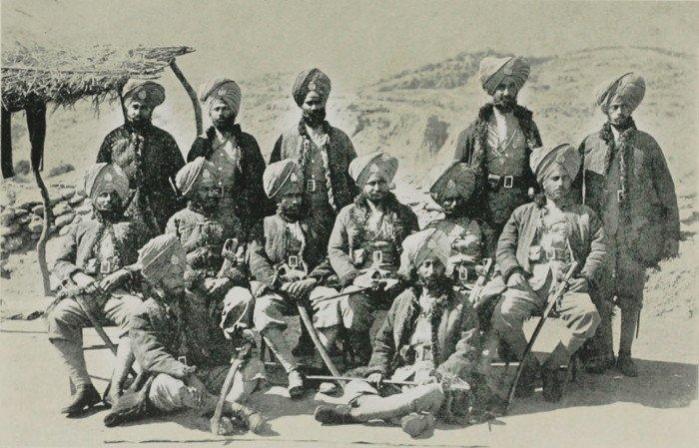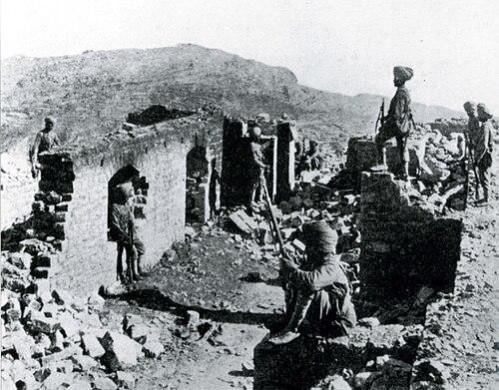
The Battle of Saragarhi stands as a timeless saga of courage, leadership, and sacrifice a beacon whose resonance transcends geography and era. On September 12, 1897, amidst the rugged and inhospitable terrain of the North-West Frontier Province, 21 Sikh soldiers of the 36th Sikh Regiment forged an eternal legend by defending a solitary communication outpost against the onslaught of 10,000 to 14,000 Afghan tribesmen. Their deliberate choice to fight to the last breath rather than surrender etched a chapter unparalleled in military annals worldwide, epitomizing the quintessence of warrior ethos, strategic intent, and human grit.
"Courage is resistance to fear, mastery of fear, not absence of fear." - Mark Twain.
Strategic Significance: The Lifeline Between Forts
Saragarhi was no mere military outpost; it was the indispensable linchpin connecting two British forts - Lockhart and Gulistan separated by mountainous terrain devoid of direct line of sight. Established as a heliographic communication post, Saragarhi's signal tower used sunlight via mirrors to relay vital coded messages, ensuring command and control across the frontier's perilous expanses. Without this node, the forts faced isolation, vulnerability to tribal insurgents, and loss of British strategic control in a complex theater governed by tribal allegiances and rugged topography.
A compact blockhouse surrounded by loop-holed walls and guarded by 21 Sikh soldiers commanded by Havildar Ishar Singh, Saragarhi's defense was essential to the security architecture of British India's volatile frontier. Martini-Henry bolt-action rifles, rationed ammunition (~400 rounds per soldier), and a handful of logistical supplies defined the limits of what this small garrison could sustain. The tribal attackers, Orakzai and Afridi Pashtuns were motivated by a combination of resistance to imperial intrusion and strategic calculation to disrupt colonial control by severing key communication arteries.
"Strategy without tactics is the slowest route to victory. Tactics without strategy is the noise before defeat." — Sun Tzu.
The Siege: Tactical Masterclass Against Insurmountable Odds
The battle commenced at dawn as the vast tribal force encircled Saragarhi, demanding surrender that was unequivocally refused by Ishar Singh and his men. From the outset, the defenders demonstrated acute tactical discipline. They refrained from firing prematurely, instead holding fire until enemy ranks breached effective killing range (~250 meters), conserving precious ammunition.
The wave after wave of ferocious assaults were repelled by disciplined volley fire, exploiting defensive loop-holes while minimizing exposure. As enemy combatants exploited flaming scrub to mask their approach and set parts of the outer defenses ablaze, the defenders strategically withdrew into inner defenses, entrenched for hand-to-hand combat. The intensity of fighting, lasting nearly seven hours, decimated both sides siblings of valor who embraced their fate with sabers, bayonets, and unwavering resolve.
Sepoy Gurmukh Singh, tasked with helicopter signalling, became the narrative's living voice. His real-time communication with Fort Lockhart divulged the defenders' plight, enemy strength, ammunition status, and steadfast resolve. His last transmissions, seeking permission to seize his rifle, culminated in an individual heroic last stand where he reportedly killed 40 adversaries before succumbing, crying the eternal Sikh war cry "Bole So Nihal, Sat Sri Akal!" This vivid, live account adds a rare layer of granularity to the historical record often absent in epic last stands.
"Discipline is the soul of an army. It makes small numbers formidable; procures success to the weak, and esteem to all." — George Washington.
Operational Consequences: Sacrifice Shaping Campaign Outcomes

Though Saragarhi fell, the tactical delay wrought by the defenders thwarted the Afghan tribesmen's broader campaign objectives, forestalling an immediate conquest of Fort Gulistan. Reinforcements were thus able to fortify British positions at the frontier, preserving the British Indian Empire's foothold amidst turbulent tribal dynamics.
The staggering cost inflicted on the attackers, over 600 casualties was testimony to the extraordinary combative efficiency of the outnumbered Sikhs. This gulf in losses spotlighted how small, disciplined contingents can materially influence larger strategic theaters by buying critical time and blunting enemy momentum. The battle unfolded within the Tirah Campaign, a colonial effort to subdue fractious tribal entities, underscoring the broader imperial struggle between fixed fortifications and insurgent tribal warfare.
"The more you sweat in peace, the less you bleed in war." — Norman Schwarzkopf.
Enduring Military and Leadership Lessons
1. Communication as a Tactical and Strategic Force Multiplier
The ingenious use of heliographs presages modern command, control, communications, computers, intelligence, surveillance, and reconnaissance (C4ISR) systems, emphasizing that communication nodes can be critical force multipliers even when manpower is scarce.
2. Fire Discipline and Resource Economy
Holding fire until the enemy entered a fatal range conserved limited ammunition, demonstrating judicious resource management under duress, a lesson paramount in modern asymmetric and guerrilla warfare contexts.
3. Leadership Under Duress
Havildar Ishar Singh's unwavering determination galvanized his men, fostering morale and cohesion critical in sustaining resistance despite inevitable sacrifice. His personal example modeled the highest standards of command presence, courage, and selflessness.
4. Psychological Impact and Morale Warfare
Inflicting disproportionate casualties disrupted attacker morale despite numerical superiority, illustrating how mental factors and reputation can shape battle outcomes in addition to raw force.
5. Strategic Value of Tactical Sacrifice
The battle underscores military doctrine principles where tactical losses are accepted in pursuit of strategic objectives, bridging the micro-battle and macro-campaign to highlight the higher purpose of smaller fights.
"In war, resolution; in defeat, defiance; in victory, magnanimity." — Winston Churchill.
Cultural and Global Legacy: The Battle's Reverberations
Saragarhi transcends its historical moment, embedding itself deeply in Sikh martial tradition and Indian military ethos. Posthumously, all 21 defenders received the Indian Order of Merit, an unprecedented collective honor symbolizing valor beyond personal glory.
The battle marked a defining moment of identity and sacrifice celebrated annually through Saragarhi Day. Memorials at Ferozepur, Amritsar, and atop the towering outcrop of the battle site narrate an enduring story of courage against overwhelming odds. The ethos of "No retreat, no surrender" has inspired not only military leaders and regiments worldwide but civil society and leadership scholars, symbolizing the universal human virtues of duty, honor, and sacrifice.
Globally, Saragarhi's lessons resonate among military historians, leadership thinkers, and conflict strategists grappling with asymmetric warfare, networked communications, and the spirit of resilience amid chaos. Its narrative joins legendary last stands worldwide from Thermopylae to Rorke's Drift, forming a transcultural tapestry celebrating human resolve.
"They fought not for glory, but for the protection of what they held dear." — Anonymous Sikh Warrior.
A Masterpiece of Valor, Strategy, and Human Spirit
The Battle of Saragarhi is a meridian where history, strategy, and human character converge. It offers profound insights into small unit tactics, the interplay of technology and terrain, and the transcendent power of leadership and sacrifice.
As a global masterpiece of military history, it challenges modern military and civilian leaders to embody resilience, strategic foresight, and an unbreakable commitment to duty. Its stark lessons and stirring narrative frame a beacon of inspiration an enduring testament that even in the darkest crucible of conflict, the human spirit can blaze with unmatched brilliance.
[Major General Dr. Dilawar Singh, IAV, is a distinguished strategist having held senior positions in technology, defence, and corporate governance. He serves on global boards and advises on leadership, emerging technologies, and strategic affairs, with a focus on aligning India's interests in the evolving global technological order.]








